8 Clinically Proven Benefits Of Using Tea Tree Oil For Skin
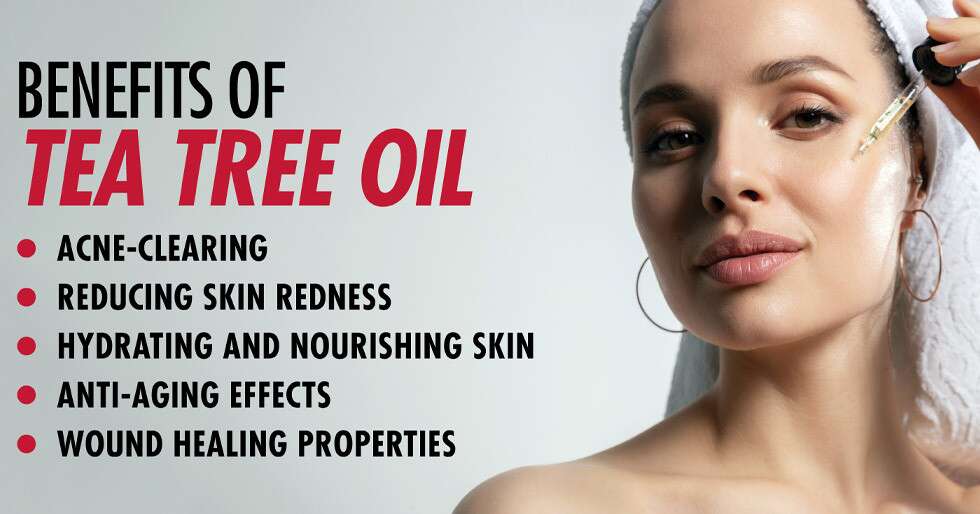
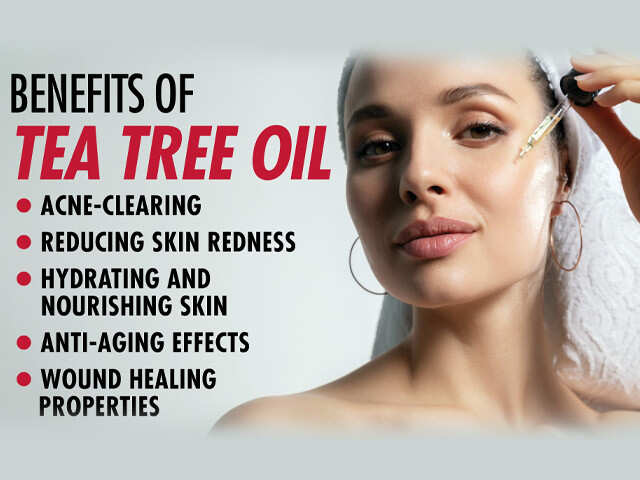
Tea tree oil is a natural essential oil that has been used for centuries by Indigenous Australians as a medicinal product (1). It is made from the leaves and twigs of the Melaleuca alternifolia, which is native to Australia. This type of oil is known for its powerful anti-inflammatory, anti-bacterial, and antiseptic qualities. It can be used to treat a variety of skin conditions such as acne, dry skin, eczema, dandruff, and even lice infestations. Tea tree oil can also help reduce inflammation associated with skin irritations like psoriasis and eczema. Here is all you need to know about using Tea Tree oil for your skin:
What Is Tea Tree Oil?
What Are The Benefits Of Tea Tree Oil For Skin?
Tea Tree Oil Side Effects
How To Use Tea Tree Oil On the Face?
Frequently Asked Questions (FAQs)
Conclusion
Sources
What Is Tea Tree Oil?

One of the major abilities of tea tree oil is its ability to fight bacteria and fungi that live on the skin’s surface. Tea tree oil contains terpinen-4-ol, an ingredient that has antimicrobial properties that are naturally active against bacteria like Staphylococcus aureus (Staph) infections, Propionibacterium acnes (P. acnes), Escherichia coli (E. coli), Klebsiella pneumoniae (Klebsiella), Pseudomonas aeruginosa (Pseudomonas), Clostridium difficile (C.diff), and Candida albicans (Candida). Since it has this broad range of activity against bacteria, using tea tree oil helps to keep your complexion clear and healthy looking by removing dirt, dead skin cells, and excess sebum on your face or body while also reducing any bacterial count present on the given area.
What Are The Benefits Of Tea Tree Oil For Skin?
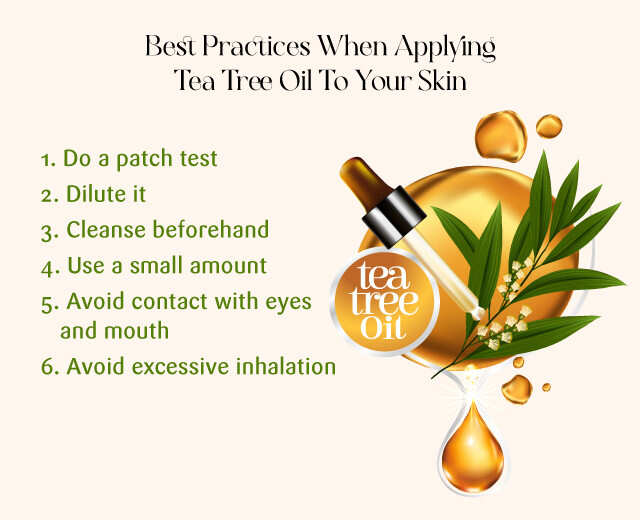
Anti-inflammatory
Studies have shown that tea tree oils anti-inflammatory action helps to soothe dry red patches[2] associated with these conditions when applied topically in low concentrations over an extended period of time.
Psoriasis
Applying tea tree oil on skin can help with psoriasis by reducing skin inflammation, moisturizing the skin to prevent flare-ups, and soothing itchy or irritated skin. It also helps kill bacteria on the skin which can reduce symptoms. Tea tree oil may also be helpful in managing psoriasis because of its anti-inflammatory and anti-fungal properties[3].
Dry skin and eczema
Applying small amounts of tea tree oil to dry skin can help rebalance skin moisture[4] levels and improve the appearance of eczema.
Anti-fungal
Tea tree oil has antifungal properties that may be effective in treating fungal infections, such as athlete’s foot, dandruff and yeast infections.[5]
Itchy Skin
Tea tree oil’s anti-inflammatory properties can provide relief from minor skin irritations, including insect bites, stings, sunburn, and itchy skin.
Wound Healing
While its healing effects are still under investigation, some tests suggest that tea tree oil is a mild antiseptic and might help in wound healing.[6]
Acne
Applying diluted tea tree oil directly to acne lesions twice a day might reduce the severity of acne breakouts because of its antiseptic properties.[7] When applied directly onto affected areas it helps unblock clogged pores reducing lesions caused by acne on both face and body while also soothing inflammation due to increased sensitivity caused by acne lesions on surrounding areas thanks once again to its potent anti-inflammatory properties acting at cellular level within inner layers of human epidermis.
Prevents skin cancer
It’s thought that tea tree oil may also possess qualities that could protect against ultraviolet radiation-induced skin cancer by reversing or suppressing early inflammatory changes on the skin caused by UV radiation exposure.[8]
Also Read – Benefits Of Olive Oil For Your Skin
Tea Tree Oil Side Effects
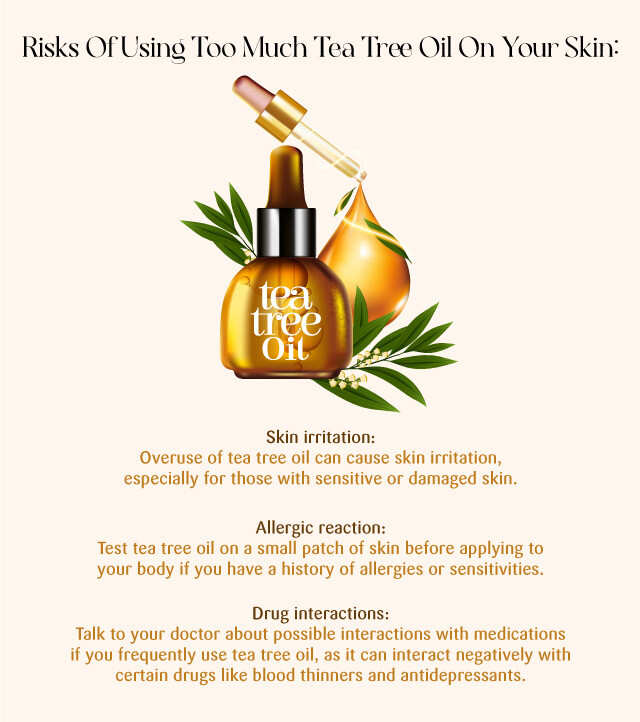
The most common side effects of using tea tree oil for skin include skin irritation, dryness, redness, or burning. In some cases, people may also develop an allergic reaction. In addition, it can make existing skin conditions such as acne worse when applied in higher doses or too frequently.
How To Use Tea Tree Oil On the Face?
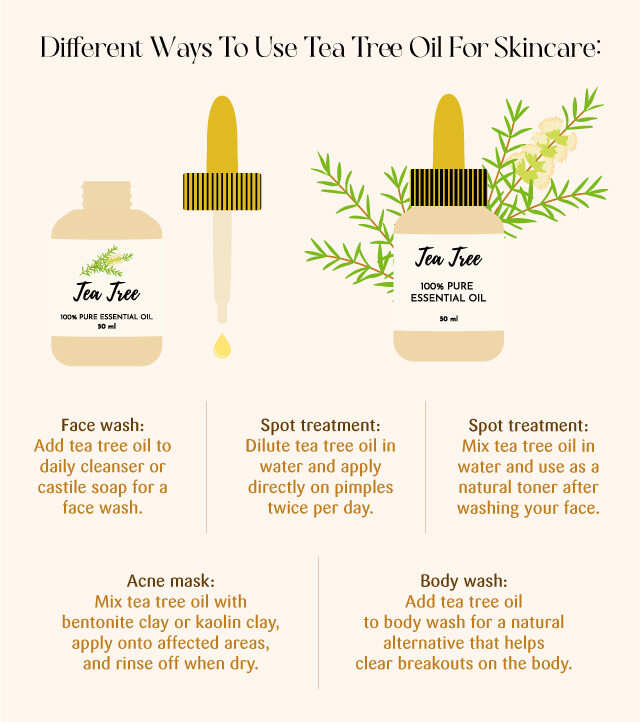
- Pour a few drops of tea tree oil onto your hands and spread it over the entire facial area, avoiding the eyes and mouth.
- Using your fingertips, lightly massage the oil into the skin for a few minutes.
- Leave the oil on for about 20 minutes.
- Rinse off the tea tree oil with warm water and pat dry with a clean towel.
Also Read – Benefits and Uses of Tea Tree Oil For Hair
Frequently Asked Questions (FAQs)
Q. What does tea tree oil do for skin?
A. Tea tree oil is a popular essential oil that can help treat skin issues such as acne and eczema.[9] It has antibacterial, antifungal, and anti-inflammatory properties to help soothe skin irritation.
Q. Can you put tea tree oil directly on your skin?
A. Yes, you can put tea tree oil directly onto your skin. Make sure to always dilute tea tree oil with a carrier oil such as coconut or jojoba oil before applying the mixture topically. Start with about 10 drops of tea tree for every 1 tablespoon of carrier oil. This will help prevent skin irritation or an allergic reaction.
Q. Can I use tea tree oil on my face?
A. Yes, you can use tea tree oil on your skin or face. However, it is important to test the mixture on a small patch of skin first to make sure no irritation occurs when applied in its diluted form[10]. If the area turns red or becomes painful or itchy, discontinue use immediately and consult with a doctor if necessary.
Q. Is tea tree oil skin whitening?
A. There is no scientific evidence to suggest that applying tea tree oil on skin has any whitening properties. Tea tree oil has a variety of other uses, such as treating acne and fungal infections, but it should not be relied upon to produce skin-whitening effects.
Q. Can I apply tea tree oil everyday?
A. In most cases, it is not recommended to apply tea tree oil every day. It can be used as an occasional spot treatment for occasional skin conditions, but using it every day can cause skin irritation, sensitivity and dry patches.
Q. Can tea tree oil remove dark spots?
A. Using tea tree oil for skin may help reduce the appearance of dark spots, but it is uncertain the extent of its effectiveness and potential side effects may be present.
Q. Does tea tree oil darken skin?
A. No, tea tree oil does not darken skin. Tea tree oil is known for its antibacterial and antifungal properties and can be used to treat skin conditions such as acne, eczema and psoriasis[11]. It can be used to fight off any bacteria or fungi that may be causing discoloration of the skin.
Q. Does tea tree oil remove tan?
A. Yes, using tea tree oil for skin can lighten the complexion and reduce pigmentation, which can help with tan removal. However, it is important to read instructions carefully when using tea tree oil as prolonged and excessive use may cause irritation or damage to the skin
Q. What oil is best for skin whitening?
A. There is no one single oil that will make your skin naturally lighter- argan oil is often recommended as one of the best natural oils for skin whitening. Some other oils have certain properties that can help brighten and even out the skin tone. These include rosehip oil, jojoba oil, almond oil, coconut oil, olive oil and avocado oil.
Conclusion
In conclusion, Tea Tree Oil provides natural means towards protecting our skin while still maintaining comfort even after repeated extensive periods without loss in quality conditions providing extra benefits due presence of special allies including terpinen-4-ol which acts effectively against multiple organisms combined with anti-inflammatory effects helping tackle many common issues especially those related dryness discomfort breakout episodes typical during colder periods being particularly useful if frequently located outdoors exposed higher levels UV radiation, which is why it is very beneficial to use tea tree oil for your skin.
Sources
- A status review on the medicinal properties of essential oils. Industrial Crops and Products, 62, 250–264. Raut, J. S., & Karuppayil, S. M. (2014).
https://doi.org/10.1016/j.indcrop.2014.05.055 - Tea tree oil reduces histamine-induced skin inflammation. British Journal of Dermatology, 147(6), 1212–1217. Koh, K. J., Pearce, A. L., Marshman, G., Finlay-Jones, J. J., & Hart, P. H. (2002).
https://doi.org/10.1046/j.1365-2133.2002.05034.x - Correlations of the components of tea tree oil with its antibacterial effects and skin irritation. Journal of Food and Drug Analysis, 21(2), 169–176. Lee, C., Chen, L. Q., Chen, L., Chang, T., Huang, C. M., Huang, M., & Wang, C. C. (2013).
https://doi.org/10.1016/j.jfda.2013.05.007 - In vitro studies on release and human skin permeation of Australian tea tree oil (TTO) from topical formulations. European Journal of Pharmaceutics and Biopharmaceutics, 64(2), 222–228. Reichling, J., Landvatter, U., Wagner, H., Kostka, K., & Schaefer, U. F. (2006).
https://doi.org/10.1016/j.ejpb.2006.05.006 - Susceptibility of transient and commensal skin flora to the essential oil of Melaleuca alternifolia (tea tree oil). American Journal of Infection Control, 24(3), 186–189. Hammer, K. A., Carson, C. F., & Riley, T. V. (1996).
https://doi.org/10.1016/s0196-6553(96)90011-5 - Hydrogels Containing Nanocapsules and Nanoemulsions of Tea Tree Oil Provide Antiedematogenic Effect and Improved Skin Wound Healing. Journal of Nanoscience and Nanotechnology, 15(1), 800–809. Flores, F. C., De Lima, J. A., Da Silva, C. B., Benvegnú, D. M., Ferreira, J., Burger, M. E., Beck, R. C. R., Rolim, C. M. B., Rocha, M. J., Da Veiga, M. L., & De Bona Da Silva, C. (2015).
https://doi.org/10.1166/jnn.2015.9176 - A comparative study of tea tree oil versus benzoylperoxide in the treatment of acne. The Medical Journal of Australia, 153(8), 455–458. Bassett, I. B., Pannowitz, D. L., & Barnetson, R. S. C. (1990).
https://doi.org/10.5694/j.1326-5377.1990.tb126150.x - Can the tea tree oil (Australian native plant:Melaleuca alternifolia Cheel) be an alternative treatment for human demodicosis on skin? Parasitology, 145(12), 1510–1520. Lam, N., Long, X., Griffin, R. C., Chen, M., & Doery, J. C. (2018).
https://doi.org/10.1017/s0031182018000495 - A review of applications of tea tree oil in dermatology. International Journal of Dermatology, 52(7), 784–790. Pazyar, N., Yaghoobi, R., Bagherani, N., & Kazerouni, A. (2013).
https://doi.org/10.1111/j.1365-4632.2012.05654.x - Skin Irritancy of Tea Tree Oil. Journal of Essential Oil Research, 9(1), 47–52. Southwell, I. A., Freeman, S., & Rubel, D. (1997).
https://doi.org/10.1080/10412905.1997.9700713 - Comparison of the cidal activity of tea tree oil and terpinen-4-ol against clinical bacterial skin isolates and human fibroblast cells. Letters in Applied Microbiology, 46(4), 428–433. Loughlin, R. G., Gilmore, B., Pathak, K., & Tunney, M. M. (2008).
https://doi.org/10.1111/j.1472-765x.2008.02334.x
Also Read – 6 Benefits Of Coconut Oil For The Skin


 Please wait while your comment is posting…
Please wait while your comment is posting…
Show Comments